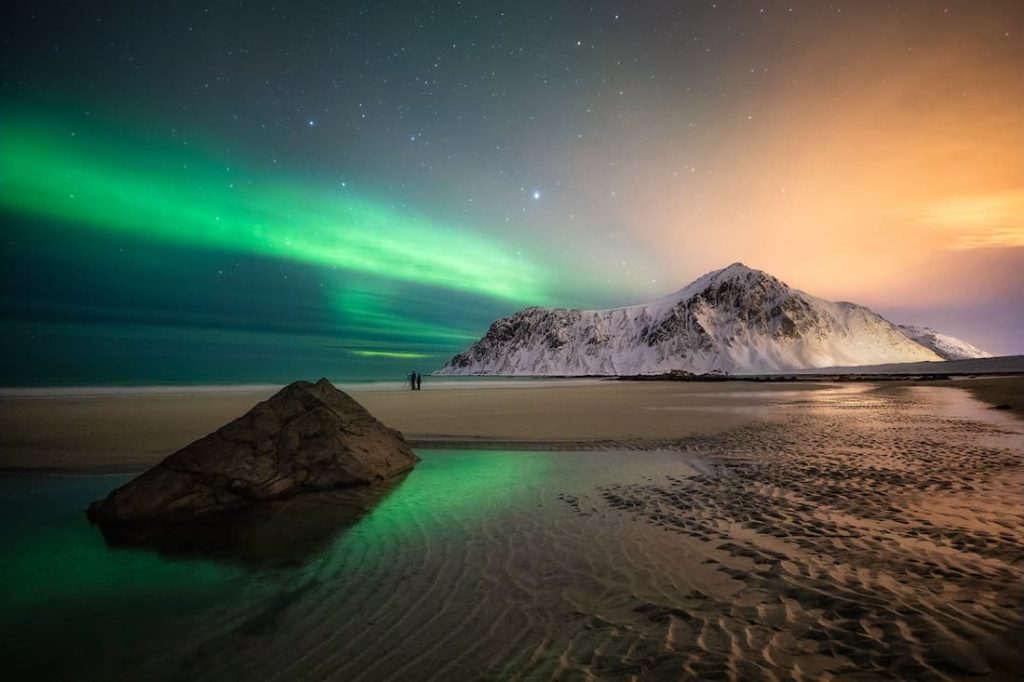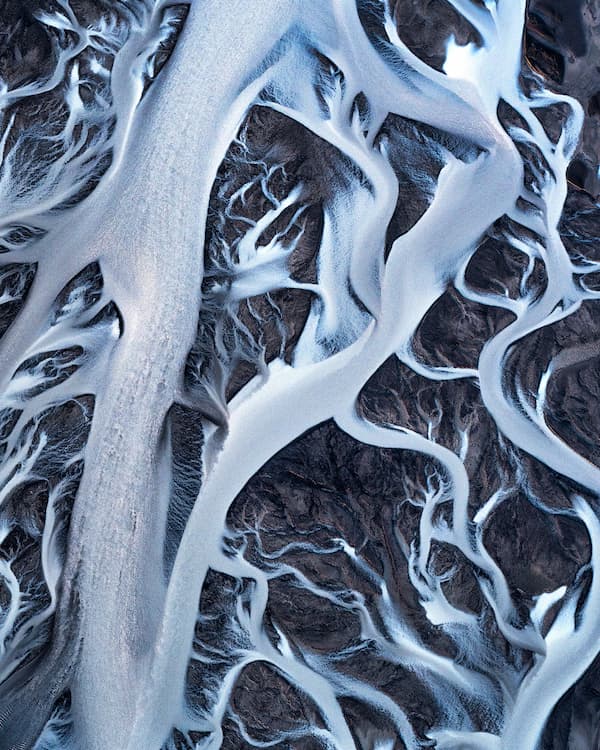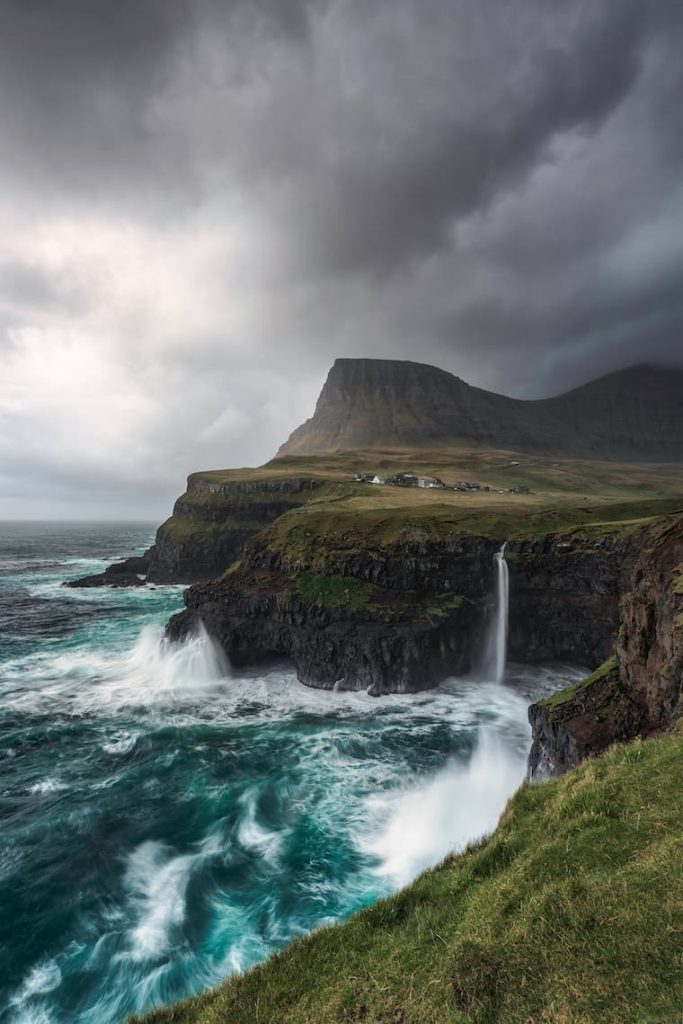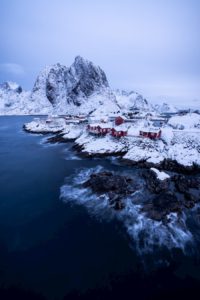
Introducing Mikkel Beiter
Mikkel picked up his first camera in 2007 and started photographing Danish nightlife. When he lost interest in that, the interest in photography was somehow lost as well – until he went to Botswana to volunteer on an environmental project. While wildlife and landscape photography got his attention here, it was Norway that really stirred up his passion for landscape photography a few years later.
Step by step, Mikkel has grown in following and developed his craft. Since he works full time in the IT industry, landscape photography is rather a professional hobby for him: “To manage the combination between a full-time job and a career in photography I’ve decided to not go full time as a photographer. Photography is a safe haven for me, a way to connect with nature. I would be devastated if I destroyed this.” This shows that not pursuing photography full time doesn’t mean that you can’t have a career in photography.
In that regard, winning a few awards has really boosted his self-confidence. “Participating in a contest is like seeking confirmation and acknowledgment for your work. And some of the contests will create huge publicity campaigns on the biggest media around the world which can generate some great opportunities.” Mikkel sees participating in contests as a way to create a name for yourself and build experience.
With one of Mikkel’s favorite photos, Shapes of Lofoten, he won two awards. We asked him what he thinks makes a great photo, and he also explained his workflow in the post-processing stage: “When I started out editing it was only via Lightroom. Now I use Lightroom as a start point and continue in Photoshop. It’s funny to actually take the time and look back – it’s time well invested!”
With all the knowledge and experience he has gathered over the past year, Mikkel was co-hosting a workshop in Lofoten a few years ago, one of the most exciting projects he’s worked on. Passing on lessons he’s learned himself to others to help them grow is something he intensely enjoyed and never expected to be doing due to his introversion.
In this interview, Mikkel also speaks about shooting in Denmark, being rescued from a blizzard in Iceland, and his inspirations.
Interview
Welcome Mikkel!
Based in Copenhagen, you work a full-time job and have been building your photography business since 2015 – and with success. Where did your journey start? How did photography become a main focus besides being an IT professional?
Hi there! Thanks for having me here, it’s a great pleasure!
So, where did my journey start, that’s actually a good question! I picked up my first DSLR camera back in the 00’es. I think, to be exact, it was 2007. My first camera was a Canon EOS 1000d. I used this camera for jobs in the Danish nightlife, taking photos of people partying in the nightclubs of Copenhagen. I did this for a year or two on the weekends while studying to become an IT Technician. After a while I lost interest in partying and taking pictures, so I put it aside. I had a break from photography for some years until 2013, when I decided to volunteer on an environmental project out in the bush in Botswana (Africa) for two months. I brought my camera for this trip; at this time, I had a Canon EOS 7d. I took a lot of wildlife and random landscape photos, nothing good but my interest in nature photography got a push.
Some years later, in 2016, I went to Lofoten in Northern Norway with my little brother and my father. For this trip I had researched a lot about landscape photography, how to do long exposures, plan after the light on locations, using filters and so on. So, the goal for this trip was to visit the area and come back with some beautiful landscape photos. The trip lit a fire inside me and I have been in love with landscape photography ever since!
I don’t think I would say that photography has become my main focus. It’s more a natural balance. I see my photography as a professional hobby. I don’t invest time in the business oriented side, I just enjoy the freedom it gives me when I’m out in nature with my camera.
Doing two things at the same time, you go step by step. What have been some key moments in your photography journey that boosted your development, growth, and career in photography? And also, what mindset allows you to manage the combination of a full-time job with a career in photography?
The first key element would probably be the acknowledgement of winning a few awards for my photography. It clearly boosted my self-confidence and belief in my own work. Secondly, Instagram. It would be a lie if I said that Instagram has not had an impact as well. It has been a tremendous help connecting with like-minded photographers where some turned into great friends that I’ve traveled with multiple times. Finally, something that I’m really proud of is that I managed to become a Sony Nordic representative last year, with the title of Sony Alpha Pro Artisan.
So, to actually manage the combination between a full-time job and a career in photography I’ve decided to not go full time as a photographer. I could probably do this if I wanted but I’m pretty sure that in the end I would kill my interest in photography because I’m forced to do it when it would be my job and main income. I prefer to have my photography as a way to get a break from my daily life, the busyness of Copenhagen and so on.
"Photography is a safe haven for me, a way to connect with nature. I would be devastated if I destroyed this by making it a full-time job."
You have won several awards over the past years. What is the reason you wanted to participate in those contests? To what extent do you think participating in a variety of contests is necessary or adds value to a photographer’s career/portfolio?
Participating in a contest is like seeking confirmation and acknowledgement for your work. Winning a contest will always boost your self-esteem and your own belief in your craft as a photographer and artist. Some of the contests will create huge publicity campaigns on the biggest media around the world and this can generate some great opportunities. That is why I have participated, to foment chances! I don’t think it’s needed to participate in contests to make it in the industry or get opportunities, but it’s definitely a way where you can create a name for yourself and make people aware of your existence and who you are.
Related to that, what do you think makes a great photo? What are your own measurements/factors when evaluating a photograph before deciding it’s ready?
An interesting focal point is necessary in a photo, a point of interest. Something that will catch the eye of the viewer. Leading lines can be a great supportive element that guides the eye to the interesting focal point. So for me, leading lines are rather essential. Great depth is an aspect that I focus on as well; this can either be done naturally with light in the scene or balancing the light during the post process. Layers throughout the photo can help create depth too, that’s where the importance of a well thought-out composition comes in.
"A good landscape photograph is more than just an interesting subject and a proper exposure. A good landscape photo is able to capture and keep the viewer's attention by telling a story and evoke the viewer's feelings - A photo should always tell a story."
You have many great photos that probably have a special meaning to you as well because of the story behind. Could you share with us an image that you are really proud of? What is the background story of this photo and what makes you feel proud of this ones in particular?
Shapes of Lofoten:
I took this photo during a morning walk around Sakrisøy in Lofoten (Norway). Here are a lot of classic spots when it comes to photography and my photo with the yellow cabin and the triangle shaped mountain is one of these classics. But even so, I caught something special I think. We had some fresh snow during the night and it covered the mountain perfectly, you can actually see how crisp the snow is when looking at the photo. Combining this fresh snow with a white to grey cloud-covered sky made everything pop in the photo. The mountain stands out and the cabin with its yellow color pops, perfect contrasts! What makes it even more special is of course the triangle shape of the roof and the mountain behind it – perfect alignment!
Beyond technicalities, Shapes of Lofoten means something special to me. This was the photo that won two awards at the Sony World Photography Awards back in 2018. I won the Open Travel category and the National Award for Denmark. To me, these are still some of the most valuable awards out of the several that I have won over time.
We are curious about your editing process/style, and we are sure our readers are too. How would you describe your editing style and process?
Hmm it’s difficult to describe the editing process/style. The first step I do to every photo is to import it to Lightroom, where I do minor adjustments. This could be correcting the color balance, lifting shadows, adding some contrast, etc. Then I continue on to Photoshop where the editing starts to be a bit more advanced, for example by using luminosity masks to target specific parts of the photo. I often dodge and burn, tweaking colors, contrast and midtones. From time to time a photo needs a little warp to make the composition in the photo work better and I can add light or glow to the photo.
To finish off a photo I clean it by cloning out distracting elements, adding a vignette and sharpening the photo. Throughout the process I work according to my liking: I enjoy colors, depth and elements that lead the eye. I usually use the same editing approach with all my photos, still considering their uniqueness. I think this is what helps to achieve a relatively consistent style that can be noticed.
Over the past years you’ve had various clients and gigs. What is one of the projects you enjoyed most working on and what made that project so interesting?
I think one of the things that I’ve enjoyed the most was when I was a co-guide on a workshop in Lofoten, Norway a few years ago. It’s no secret that the business side of photography is not that interesting for me, but co-hosting a workshop with 10 clients was a fantastic experience. I learned a lot about myself during this workshop and I wouldn’t mind doing it again sometime in the future.
Mainly, I learned that I can overcome my introversion and shyness. I realized that, despite being introverted and not too keen on stepping up front, I’m able to teach people things that I have learned myself during the last couple of years and I learned how to guide people effectively. It is a very different experience from photographing yourself and by teaching others, you also teach yourself!
With regard to my photography, I don’t work with specific projects – or maybe you could say that my photo trips are my small projects where each series contains images from that specific trip.
On the other hand, for each enjoyable project or travel there are more challenging moments, trips and tasks. Could you mention three moments that stuck with you because of the challenge, and the lessons that you learned/realized as a result?
The Covid-19 has been a challenge for me and I think that applies to everyone. I had to cancel 4 trips in 2020 because of the world wide lockdown. 2 trips to the US, 1 trip to Lofoten in Norway and a trip to Faroe Islands. Luckily the cancellation didn’t have a financial impact on me but I feel so sorry for those who have been struck financially by the pandemic. Better times are ahead!
Another challenging moment I remember might be a severe snow blizzard during a visit to Iceland back in 2017. A friend and I visited Iceland during winter time. A snow blizzard was predicted but in another area of the island. We decided to continue our journey but unfortunately got hit by the snow blizzard in a really remote area even though it was not supposed to hit that area. We got stuck in a parking lot with our van; it could simply not drive up the road because of the massive amount of snow. We were stuck and alone. The area had bad cell reception but we managed to get hold of the police and the Icelandic rescue service. Because of the massive snow blizzard they couldn’t rescue us until the next day, so we sat in our van until the next day when the rescue service arrived during the evening, still with the massive blizzard raging. We left the car and they drove us out in their rescue vehicle.They brought us to a nearby hotel, where we flew out with a domestic plane to Reykjavik the next day. This was our only window to get out of the blizzard. The area would be caught up by this severe weather for another week.
"I’m so happy that we only had to stay in the car for one day before we got rescued. Sometimes you regret your decision! I learned my lesson here and I respect the weather way more and ever since I spend some extra time reading the weather predictions because of this experience.!"
Although your portfolio is dominated by (nordic) sceneries, you also spend time in Africa capturing wildlife and lately focus more on the smaller details of nature, showcasing the lines and structures noticeable from a closer or different perspective. You wrote: “During the last one and a half years I have learned to open my eyes for the smaller things in nature. Beauty is not only big epic vistas!” How has shooting a variety of sceneries and subjects allowed you to improve your craft? And also, what type of scenery or subject are you dreaming of photographing, or learning how to photograph better?
I have a great friend and fellow photographer that has inspired me quite a lot and it has taught me that epic vistas are not the only thing about landscape photography. Kai (@kaihornung) is a great friend that I met via Instagram back in 2016 I think. We support each other, together with a few other people. I think there’s not a day where our Instagram Group Chat is silent. Most of the time it’s funny stuff not related to photography, other times we debate and help each other with editing ideas and pointing each other in the right direction.
Kai and I often travel together and it’s during these trips that he inspired me to try something else. Going more into details with smaller things in nature makes you less dependent on weather conditions with epic skies and so on. This variety of sceneries and subjects has definitely helped me to evolve as a photographer. I see things differently now.
I guess a photographer always wants to become a better photographer. It takes time and I’m fine with that. I’m not in a rush. You can spend countless hours watching others edit on Youtube and spend countless hours in the field but is this fun in the end? I prefer to enjoy my work, so if I don’t want to edit and photograph for a month or half a year, then it’s what I do. This might stop me or slow me down from evolving, but it helps me not get tired of my hobby.
When I look at my photos from 2016 and compare them with my work today, the difference is massive! It’s easy to see by looking at the way I edited my work back then. When I started out editing it was only via Lightroom. Now I use Lightroom as a startpoint and then continue in Photoshop. It’s quite funny to actually take the time and look back. It’s time well-invested!
You are based in Denmark, which is generally not the first destination for landscape photographers. Nevertheless, we want to keep shooting and creating and we cannot continuously travel. What do you think is important to keep in mind, and what attitude is necessary, to still grow as a photographer and build a great portfolio even when living in a supposedly “not so epic” location compared to others?
Yes, I live in Denmark and that might not sound that sexy for a landscape photographer but every country has its own charme. We don’t have big epic vistas with mountains, deserts, waterfalls and so on here in Denmark, however, the nature is still beautiful and idyllic.
The positive side is that you don’t have the obvious shot just right in front of you. You have to work for it, be creative and compose a scene that works well. You might even challenge yourself to shoot intimate landscape scenes. This is something that will keep your mind sharp and could even bring you even better results when you visit those countries with epic locations; you might get home with a shot and perspective no one else has seen before just because your eye is trained to look for the beauty and the details.
"I think it’s important to be open minded and accept the fact that a scene or a place might not be epic but will help you evolve as a photographer anyway and teach you to see things from another perspective."
However, I also had to learn it. The world wide pandemic was one of the stepping stones for me to get started with capturing photos from my own country. I have always been much more interested in Faroe Islands, Iceland and Norway. Denmark was rather dull in my opinion and I didn’t really shoot here. The lockdown made me realize that maybe I should reconsider this and change my mind. I chose to see the positive side and I started to explore my home country!
We imagine there are photogenic places in Denmark that you find yourself going back to when possible. What are your favorite locations in Denmark?
Of course! There are plenty of places here in Denmark, you just have to find them. I’m limited to only weekends, where I can go out and explore. Not owning a car makes it even harder. So I usually have to coordinate with my family, to borrow a car if I wanna go out exploring locations. This means that I don’t get out as much as I wanted, but I’m okay with this.
1) I have a local cemetery here in Copenhagen that I visit from time to time. It’s a beautiful tree alley. This place looks amazing all year around and it’s close to where I live, so I don’t have to borrow a car.
2) Another place that I really like is the west coast of Jutland (region). My girlfriend is from this area and we often visit her family there. The nature along the west coast is just amazing!
3) I guess Faroe Island still qualifies as a part of Denmark, so this would also be one of my favorite places. You need a bit more planning to get here of course but the nature is just mind blowing.
Would you like content like this sent to your inbox?




















